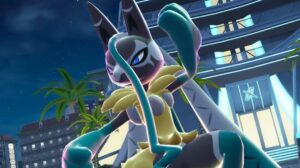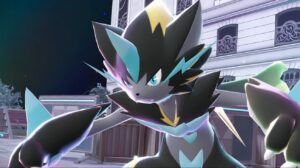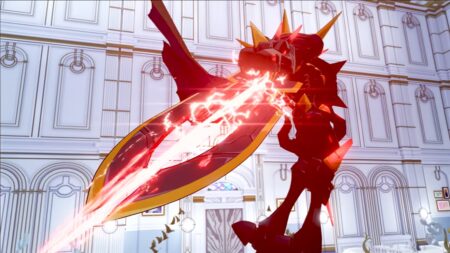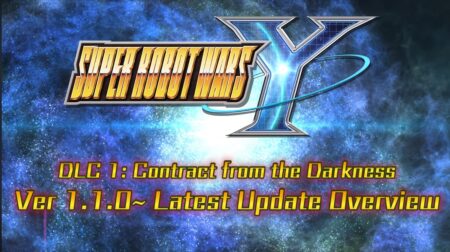It’s easy to think of heaviness as a number — kilograms, pounds, a stat on a screen. But weight is rarely just physical. Some things feel heavy not because of what they are, but because of what they mean.
Grief is heavy. Responsibility is heavy. Memory, when it refuses to fade, is heavy too.
So then the question becomes: Why do we carry these things at all? Why take on weight that isn’t ours? Why walk the long road when there’s a shorter one? Maybe, just maybe… some things are meant to be carried — not for what they are, but for who we become beneath their weight.
Death Stranding 2 is built on that truth. It reminds us that the heaviest loads are often not our own, but they may be the ones most worth bearing. And by that measure, Death Stranding 2 is unequivocally worth the weight.

Kojima once referenced that the first tools mankind created were the stick and the rope. The stick is to keep danger away. The rope is used to bring things closer. Death Stranding 2, like its predecessor, is built on this balance. The rope is everywhere, in the bonds you form with players you’ll never meet, in the connections between outposts, and in the invisible thread of shared purpose that runs through every delivery.
But this time, Kojima isn’t afraid of the stick. He knows sometimes you need it, to defend, to push back, to survive. Where the first game was about rebuilding through trust, this one acknowledges that not everything can be reached with open arms. Some threats demand confrontation.
And the moment you step into a camp and take it down with the kind of precision and tension that rivals The Phantom Pain, it clicks. The stealth, the pressure, the calculated chaos, it’s all here, but filtered through a world where combat isn’t the goal, just a necessary part of the journey.
It brought me back to my first Kojima experience: Metal Gear Solid V: The Phantom Pain. That desolate, Middle Eastern terrain had its kind of loneliness, not unlike Death Stranding 2‘s (Redacted). The parallels are uncanny. Both worlds are haunted. Both are heavy. And both make it clear that sometimes, carrying the rope isn’t enough. Sometimes, you need the stick and the skill to use it.
The stick was mankind’s first tool, and in Death Stranding 2, it’s clear we’ve come a long way since. Because here, the stick isn’t just for fending off danger. It’s an assault rifle loaded with rubber rounds. A high-voltage baton for those who like their justice up close. A tranquilizer sniper rifle is for the patient and precise. Each weapon is tuned with care, and every loadout comes with its trade-offs, whether it’s weight, recoil, ammo count, or noise profile. But you can never go wrong with the (REDACTED). It literally shreds.
Each weapon feels good. Recoil kicks just right. The sound design cracks with weight. And when you land a perfect shot and watch that brief cinematic slow-mo kick in — it’s satisfying in a way only Kojima could pull off. Moments like these almost make you imagine what a modern Metal Gear could be like with today’s tech and tactile feedback.
You also get an assortment of grenades to play with — like blood grenades (yes, made from Sam’s actual blood) that hurt BTs, stun grenades that disable vehicles, and my personal favorite: the BT hologrenade. Toss one of those and watch enemies panic at the sudden appearance of a ghostly BT hologram. Their terrified reactions never get old, and it’s a brilliant mix of utility and silliness that only Kojima could get away with.
Still, while the combat feels good in your hands, it’s not exactly groundbreaking. You’ll sneak, distract, disable, or blast your way through camps, checkpoints, and enemy patrols — but in the end, combat is just part of the journey. It’s not the destination. Death Stranding 2 is still more about what you choose to carry and why.
But make no mistake — along the way, there are moments where the stick takes center stage. And when it does…

The events of Death Stranding 2 take place eleven months after the first game. Sam and Lou are on the run, living a quiet life on a quiet hill in [REDACTED]. It feels peaceful at first, but as with most things, the calm doesn’t last. The opening sequence is absolutely breathtaking. The first glimpse of this new world hits hard. The lighting, the scale, the haunting beauty of the environment, combined with that signature Kojima musical build, gave me actual goosebumps. And I’m not even someone who usually cares about graphics.
But this felt alive. You can hear the crunch of fine gravel through the DualSense speakers, like the terrain is whispering to you. It was so sharp, so present, it felt like a BT might be nearby, and for a second, I held my breath.
Sam once again carries the weight of reconnecting an entire continent, one fateful delivery at a time. This time, [REDACTED] is a landscape as harsh as it is breathtaking. Not a one-to-one recreation, but a reimagining of the continent in its most raw, primordial form. Towering mountains, dense green forests, and vast deserts stretch across the map, each biome offering its own set of brutal, beautiful challenges.
The mountains groan with seismic unrest. Earthquakes strike without warning, sending you tumbling over cliffs just when you think you’ve found your footing. The deserts are no less punishing, swallowed whole by blinding dust storms that strip away all visibility, leaving only instinct to guide you forward.
And the land itself is alive. Chiral wildlife stalks the terrain, from bats that scramble your sensors to spiders that drain your gear dry. One misstep, one moment of inattention, and your carefully packed cargo becomes collateral.

And the reason you get to traverse the beautiful, untamed landscape of [REDACTED] is to reconnect the continent one outpost, one base, one quiet settlement at a time. Each delivery brings the network one step closer to whole.
Some are urgent: medicine for isolated dwellers, experimental ammo to fight off BTs, or mission-critical packages that push the story forward. But the ones that truly pulled me in were the quieter requests, prized records, fiesta decorations, and yes, a life-saving quesadilla or two. The little things. The kind that seem trivial on paper, but over time, add up to something more: upgraded gear, deeper bonds, and that subtle, satisfying sense that your effort mattered.
What’s brilliant is that Death Stranding 2 never forces these side deliveries on you. But it gives just enough incentive, a better pair of boots here, a new backpack frame there, to make you want to do them. Before you know it, hours have passed. They’re not just fetch quests. They’re gravity wells. Quiet commitments. The kind of missions that don’t shout, but gently steal your time.
Off the main roads, hidden bases offer more surprises — like an artist who unlocks custom color palettes, or engineers who give you access to upgraded equipment if you connect them to the chiral network. The more you invest in these relationships, the more the game gives back: stronger gear, more durable tools, and subtle boosts that help you weather the worst.
Vehicles unlock early and come with both advantages and headaches. They’re great for hauling heavy cargo, but drain batteries fast and can be a nightmare in rough terrain. Still, going from tripping over pebbles to clearing cliffs in a single bound is immensely satisfying — a slow-burn progression that rewards patience and planning.
Sometimes, you’ll get a quiet reprieve from rocky roads, a stretch of perfectly paved highway, fully restored. Not by you, but by someone else. And in that moment, something shifts. You’re no longer just delivering for yourself. You feel the pull to pay it forward. Death Stranding 2 lets you build for those that come after, ziplines, charging towers, even cannons that launch you through the air like a human package. Each sign, structure, and shared path adds to the world. And when another player uses what you left behind, they can give you a like. It doesn’t boost your stats or unlock new weapons. But it makes you feel… seen. And in this world, that’s priceless.
Helping shape that journey is a new pseudo-skill tree built around APA enhancements. You can tune your porter style to suit your approach: stealth, visibility, terrain navigation, or vehicle support. Abilities like noise cancellers, weather sensors, and emergency battery packs open up new strategies. Best of all, points can be reassigned at will, letting you shift playstyles without penalty — whether you’re hiking solo or speeding across the map in a cruiser built for chaos.
Every choice feeds into a rhythm that feels uniquely yours — a strand in a much larger web.
And there’s just something about it all: the deliveries, the music, the world, the quiet rewards. It gives you that “one more run” feeling, and before you know it, you’re still walking as the sun rises and the rooster crows in real life.

But Death Stranding 2 isn’t just carried by Sam, it’s carried by everyone he meets along the way. Kojima has this gift for writing characters who feel odd, broken, charming, and terrifying — often all at once. And somehow, even the strangest ones manage to feel utterly human.
Take Rainy. A girl followed by the rain wherever she goes, on the verge of ending her life, before someone pulled her back. When she shakes her beaded bracelet to summon the rain, it’s not just a mechanic — it’s a ritual. Power, grief, and beauty woven into one simple gesture. Kojima has this way of tapping into something primal, something ancient, with the way his characters move and the powers they hold. That one moment hit something in me I didn’t expect — and I teared up.
Then there’s Tarman, played by George Miller, yes, that George Miller. He lost his son and his hand in a tar fishing accident, and now he can feel the flow of tides in a world where even the oceans feel haunted. It’s mythic. Like something out of folklore.
Guillermo del Toro’s Deadman returns as well, still oddly warm beneath the stitches. He gives Sam a toy with a dose of vaccines and then nearly breaks your heart with a single quiet line. Still searching for his beach. Still searching for something like a soul. There’s something of Pinocchio in him — a man trying to be more than he was made to be.
Fragile is here too, of course, still as sharp, loyal, and wounded as ever. Her bond with Sam feels deeper this time. Maybe love. Maybe just two broken people leaning toward the light. And then there’s Tomorrow — the enigma. A mysterious girl with an angelic face, who moves like a ghost but fights like a demon. She’s the kind of character who floats through the story like a vision, soft-spoken one moment, deadly the next.
And Lou? She’s still the reason Sam keeps walking. And then… the rogues.
Higgs is back, sharp-tongued and smirking, more dangerous than ever. His taunts cut deeper, his menace feels heavier. But the one who truly lingers — the name that haunts me even now — is Neil.
Played with a haunting brilliance by Luca Marinelli, Neil doesn’t just steal scenes. He devours them. He’s spectacle and sorrow wrapped into one of the most powerful performances I’ve ever seen in a game. The best story. The best presence. The best of everything. And I’ll leave it at that.
It’s almost amusing, in the best way, that Hideo Kojima, one of gaming’s most revered directors, cast two of the most visionary filmmakers alive to play his wise men. Guillermo del Toro and George Miller. In the game, they’re weathered mentors. In real life, maybe it’s the same. Artists guiding artists. Elders passing the torch.

The ropes, the sticks, the characters, everything you’ve been carrying, building, and learning, all collide in the game’s biggest moments. These aren’t just boss fights. They’re releases. Payoffs. Where all the quiet, careful hours come to a head.
And man, some of them hit you right in the face.
There’s one moment that completely floored me — the entrance of the mystery man. It lands with all the energy of a Rocky montage and the malevolent air of Scar’s “Be Prepared”. And his crew? They move like a proper unit. They check corners. They flank. They flush you out. For a second, it doesn’t feel like Death Stranding anymore; it feels like a tactical shooter. Like, the game has suddenly grown teeth. It’s jarring in the best way. You’ve spent hours sneaking past threats, avoiding conflict, maybe even forgetting how to aim properly, and now here you are, in an all-out firefight. No allegory. No quiet symbolism. Just you and the storm bearing down. And it’s incredible.
And the finale? Pure Kojima. It’s long, intense, combat-focused, and hits with real weight. It’s not just one boss fight, it’s endurance. It’s emotional. It’s chaos. It forces you to use everything, stealth, guns, gadgets, even your damn shoes. You start to realize: the game’s been preparing you for this. Every delivery. Every struggle. Every choice in the loadout screen.

At the center of it all — the weight, the rope, the sticks, the ghosts, the gods — is Sam. Still reluctant. Still tired. Still being pulled toward something he never really asked for. Early in the game, you’re given a choice. Say no… and it loops. You’re right back where you started. It’s subtle, but it lands. Like the game itself is saying, “You don’t get to sit this one out.”
It’s hard not to feel for him. He’s a porter, a father, a ghost of a soldier — and yet he still feels like someone else’s cargo. Something to be moved. Someone to be used. That tension never really goes away. He wants peace, but peace keeps slipping just out of reach.
The story? It’s wild. Beautiful. Confusing in that very Kojima way. One second, you’re delivering vaccines with a stuffed toy. Next, you’re staring down a flaming tar whale while a man floats toward you like a puppet cut from its strings. Is there logic? Yes. Is it sound? Not really. But it’s messy, emotional, and mythic in scale — all while being filled with tiny, painfully human moments.
Some scenes hit hard. A monologue that knocked the wind out of me. A quiet grooming sequence that mirrored a kind of emptiness I didn’t expect a game to capture. There’s grief here. But there’s also hope. And love. And guilt. It’s all tangled up together, stitched into a dream you wake up from still feeling.
That said — it’s not perfect.
Some deliveries drag, especially when you’re just moving from point A to point B with nothing much in between. After 30+ hours, you’ll wish for more dynamic encounters to break up the rhythm.
And sometimes, the story dives so deep into its own worldbuilding and exposition that you lose sight of Sam, the guy beneath the missions, the one who’s just trying to keep going.
But even with its stumbles, Death Stranding 2 stuck with me. It’s messy. It’s over the top. It’s absolutely not for everyone. But it moved me. And for a game about carrying things, that feels like the point. It’s strange. It’s human. It’s heavy. Death Stranding 2 is worth the weight.
Death Stranding 2: On the Beach (PS5)
But even with its stumbles, Death Stranding 2 stuck with me. It’s messy. It’s over the top. It’s absolutely not for everyone. But it moved me. And for a game about carrying things, that feels like the point. It’s strange. It’s human. It’s heavy. Death Stranding 2 is worth the weight.
The Good
- Memorable Characters
- Luca Marinelli's Performance
- Gameplay Loop
- Graphics and Performance
- Haunting Score
The Bad
- Overly Complicated Plot
- Deliveries can get repetitive






